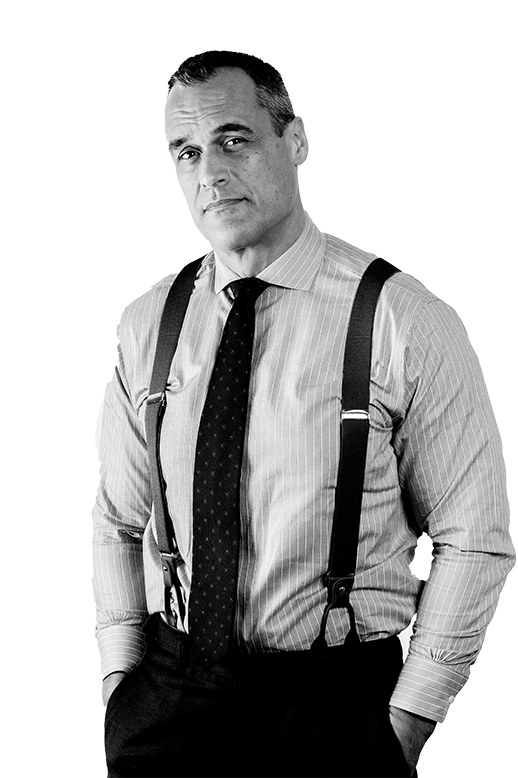Dan Gardner is the New York Times best-selling author of Risk, Future Babble, Superforecasting (co-authored with Philip E. Tetlock), and How Big Things Get Done (co-authored with Bent Flyvbjerg). His books have been published in 26 countries and 20 languages. Prior to becoming an author, Gardner was an award-winning investigative journalist. More >
Sex, Data And Ideology
Readers of the New York Times will be familiar with columnist Nicholas Kristof and his crusade -- one of several -- against sex trafficking.
The routine is standard by now: The well-travelled Kristof visits a brothel in some fantastically poor Third-World country and profiles a girl, usually a minor, who was tricked or snatched away from her family and forced to sell sex in a distant city. In a very literal sense, she is a slave.
At the end of the column, Mr. Kristof cites eye-popping figures about the size of the sex trafficking problem, lauds a coalition of American feminists and religious conservatives for raising the profile of the issue, and demands that the U.S. government do more.
Much of this is wonderful journalism. But there's a big part of the story that Mr. Kristof never mentions.
A good introduction to what's missing is an article titled "Moral crusade against prostitution" in the latest edition of the journal Society.
"A robust, new moral crusade against prostitution and sex trafficking has arisen in the past few years, targeting these issues with a vengeance and making a host of outlandish claims," writes Ronald Weitzer, a sociologist at George Washington University in Washington, D.C.
Mr. Weitzer does not deny the reality of sex trafficking and the urgent need to catch and punish those who practice it. What he questions is the scale of the problem, and the way it is being manipulated by the American coalition Mr. Kristof so admires.
The numbers are certainly impressive. One United Nations report says a million children are held in sex slavery. Other sources have said the total number of trafficking victims is four million a year. The U.S. State Department says 15,000 victims are shipped to North America annually, of whom 80 per cent are female and 50 per cent children.
These are all horrifying figures. But how are they calculated?
Trafficking is a very black market. Sex trafficking is even more underground. And most of it occurs in very poor countries, many of which don't even have accurate counts of their populations. It seems impossible that anyone could come up with accurate numbers, or even estimates.
"It is quite telling," Mr. Weitzer writes, "that the sources for the figures are usually missing, and no agency has ever revealed much about how it calculates the total number of victims."
The people behind the numbers -- the crusaders -- are the radical feminists and religious conservatives Mr. Kristof praises at every opportunity. But what Mr. Kristof doesn't say is that their concern is not limited to sex slavery.
Religious conservatives are opposed to all prostitution under any circumstances. They don't want to abolish sex slavery. They want to wipe out the whole sex trade. Everywhere.
The same is true of radical feminists who argue that no woman would freely choose to be a prostitute under any circumstances. Even if a woman thinks she did, she didn't really. She is deluded. Thus, the Manhattan escort making six figures is no different from the girl chained to a cot in a hellish Cambodian brothel: They are both sex slaves.
Of course, most people won't feel a burning need to rescue the Manhattan escort. But they will want to help the Cambodian girl. The crusaders know this. So they do everything they can to connect sex trafficking and non-coercive prostitution and erase the obvious line between the two.
The leaders of this effort are several American university professors -- all radical feminists -- who work on both sex trafficking and domestic prostitution. In research that Mr. Weitzer describes as "replete with methodological and analytical flaws," they claim to prove that prostitution in any form is always violent and coerced and that the decriminalization of prostitution in any way would increase sex slavery.
This contradicts a great deal of other research, Mr. Weitzer notes, but the professor-activists have a simple solution for that problem: They ignore other research.
Solid science it is not. But it is influential.
At the urging of the religious right, the Bush administration has embraced the anti-prostitution crusade and the bogus research of the feminist professors is now the official word of the U.S. government. It can be found on the State Department's website, which includes the categorical declaration that all prostitution "is inherently harmful. Few activities are as brutal and damaging to people as prostitution."
Mr. Weitzer doesn't mention it, but there are signs the American crusade is increasingly influential in Canada.
In railing against "global sex slavery," Irwin Cotler, the former justice minister, often uses the same language and numbers as the Bush administration. And Tom Axworthy -- the former adviser to Pierre Trudeau now leading a review of Liberal party philosophy and policy -- recently published an impassioned article in the Toronto Star in which he repeated all the State Department's empty numbers as hard fact and used them to conclude that the scale of sex slavery today "is 10 to 15 times greater" than the Atlantic slave trade of centuries past.
"There is no doubt that coercive sex trafficking occurs," Mr. Weitzer cautions near the end of his article. The horribly abused girls that Nicholas Kristof writes about are only too real.
"But the issue has become thoroughly politicized. Activists and government officials have trumpeted phantom statistics and exploited anecdotal horror stories as evidence of a worldwide epidemic of coerced prostitution and to justify a campaign against all forms of commercial sex."
There's only one word to describe a moral crusade that uses the suffering of innocents to advance an unrelated goal: immoral.
